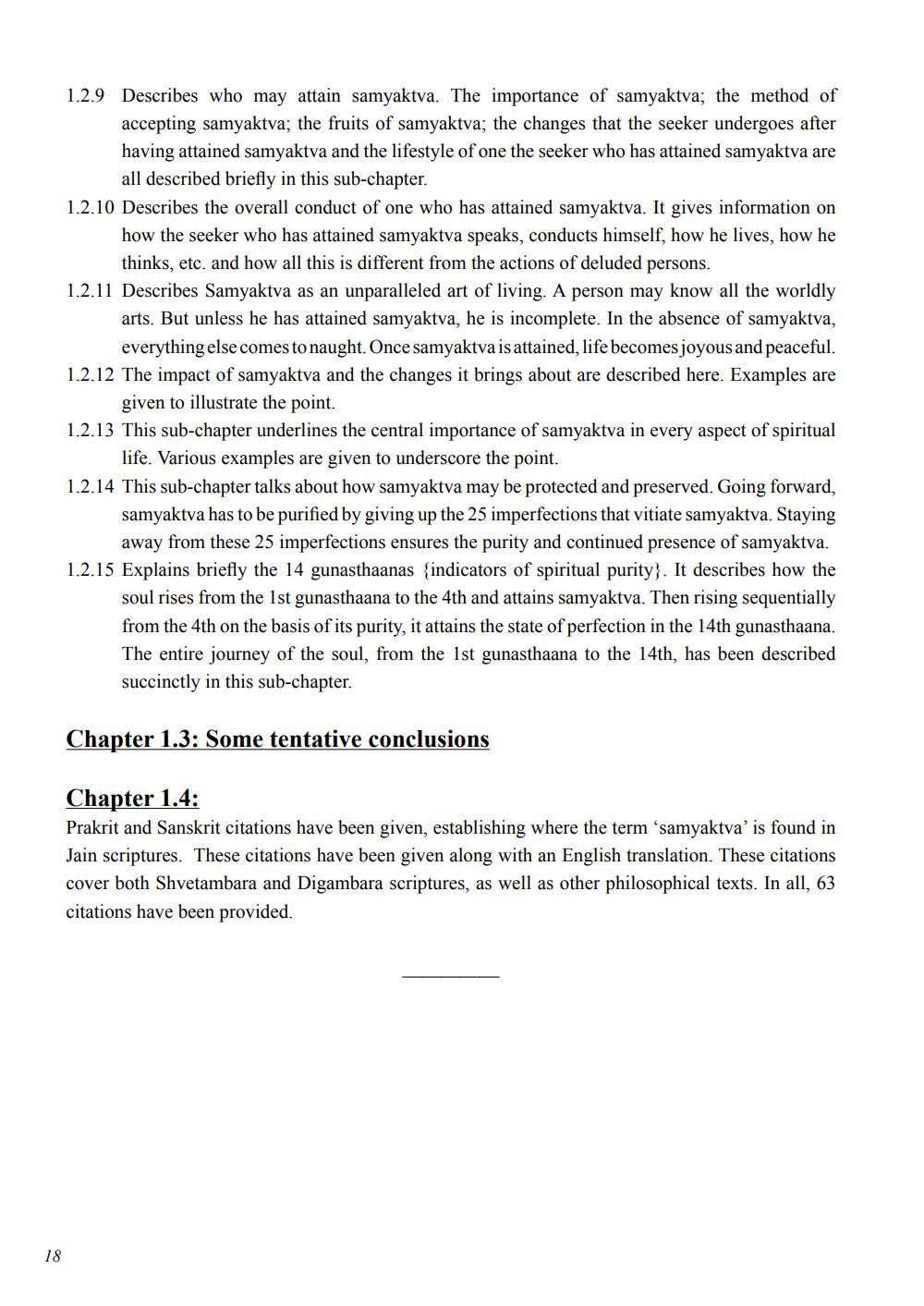________________
1.2.9 Describes who may attain samyaktva. The importance of samyaktva; the method of accepting samyaktva; the fruits of samyaktva; the changes that the seeker undergoes after having attained samyaktva and the lifestyle of one the seeker who has attained samyaktva are all described briefly in this sub-chapter.
18
1.2.10 Describes the overall conduct of one who has attained samyaktva. It gives information on how the seeker who has attained samyaktva speaks, conducts himself, how he lives, how he thinks, etc. and how all this is different from the actions of deluded persons.
1.2.11 Describes Samyaktva as an unparalleled art of living. A person may know all the worldly arts. But unless he has attained samyaktva, he is incomplete. In the absence of samyaktva, everything else comes to naught. Once samyaktva is attained, life becomes joyous and peaceful. 1.2.12 The impact of samyaktva and the changes it brings about are described here. Examples are
given to illustrate the point.
1.2.13 This sub-chapter underlines the central importance of samyaktva in every aspect of spiritual life. Various examples are given to underscore the point.
1.2.14 This sub-chapter talks about how samyaktva may be protected and preserved. Going forward, samyaktva has to be purified by giving up the 25 imperfections that vitiate samyaktva. Staying away from these 25 imperfections ensures the purity and continued presence of samyaktva. 1.2.15 Explains briefly the 14 gunasthaanas (indicators of spiritual purity). It describes how the soul rises from the 1st gunasthaana to the 4th and attains samyaktva. Then rising sequentially from the 4th on the basis of its purity, it attains the state of perfection in the 14th gunasthaana. The entire journey of the soul, from the 1st gunasthaana to the 14th, has been described succinctly in this sub-chapter.
Chapter 1.3: Some tentative conclusions
Chapter 1.4:
Prakrit and Sanskrit citations have been given, establishing where the term 'samyaktva' is found in Jain scriptures. These citations have been given along with an English translation. These citations cover both Shvetambara and Digambara scriptures, as well as other philosophical texts. In all, 63 citations have been provided.




